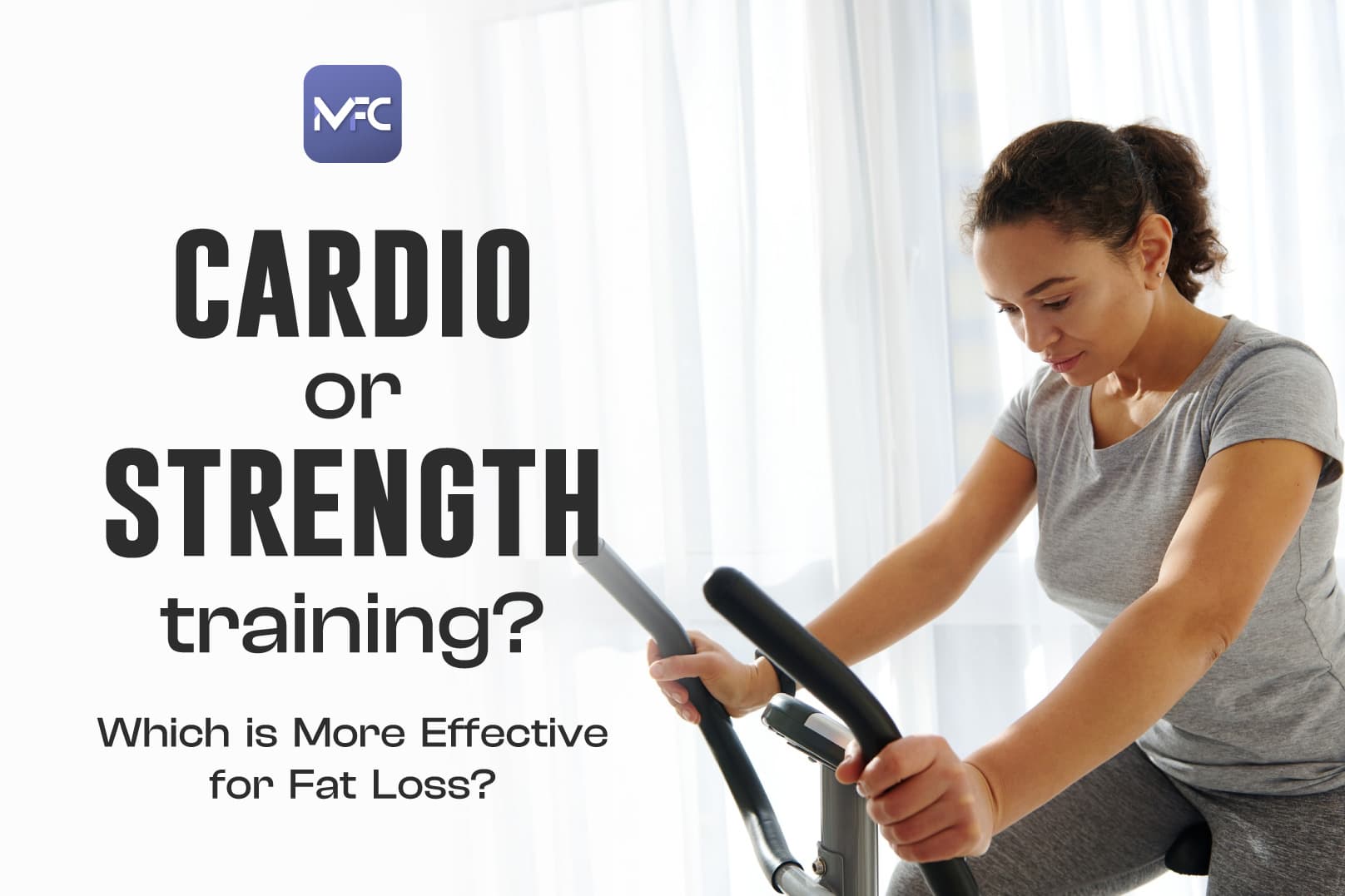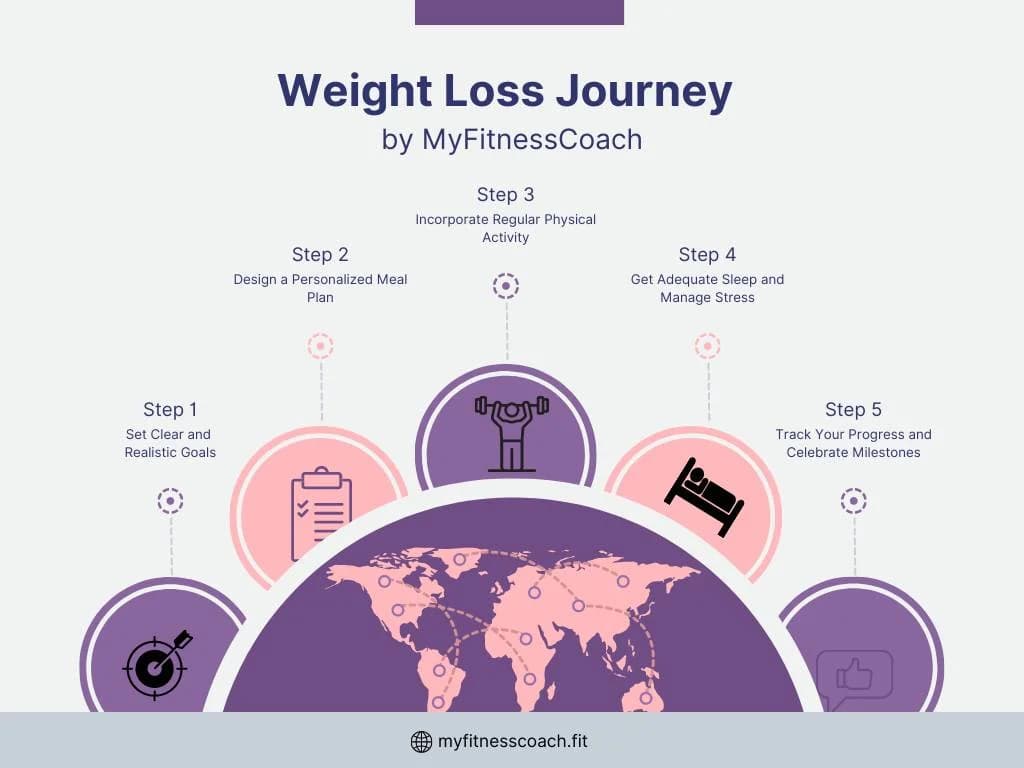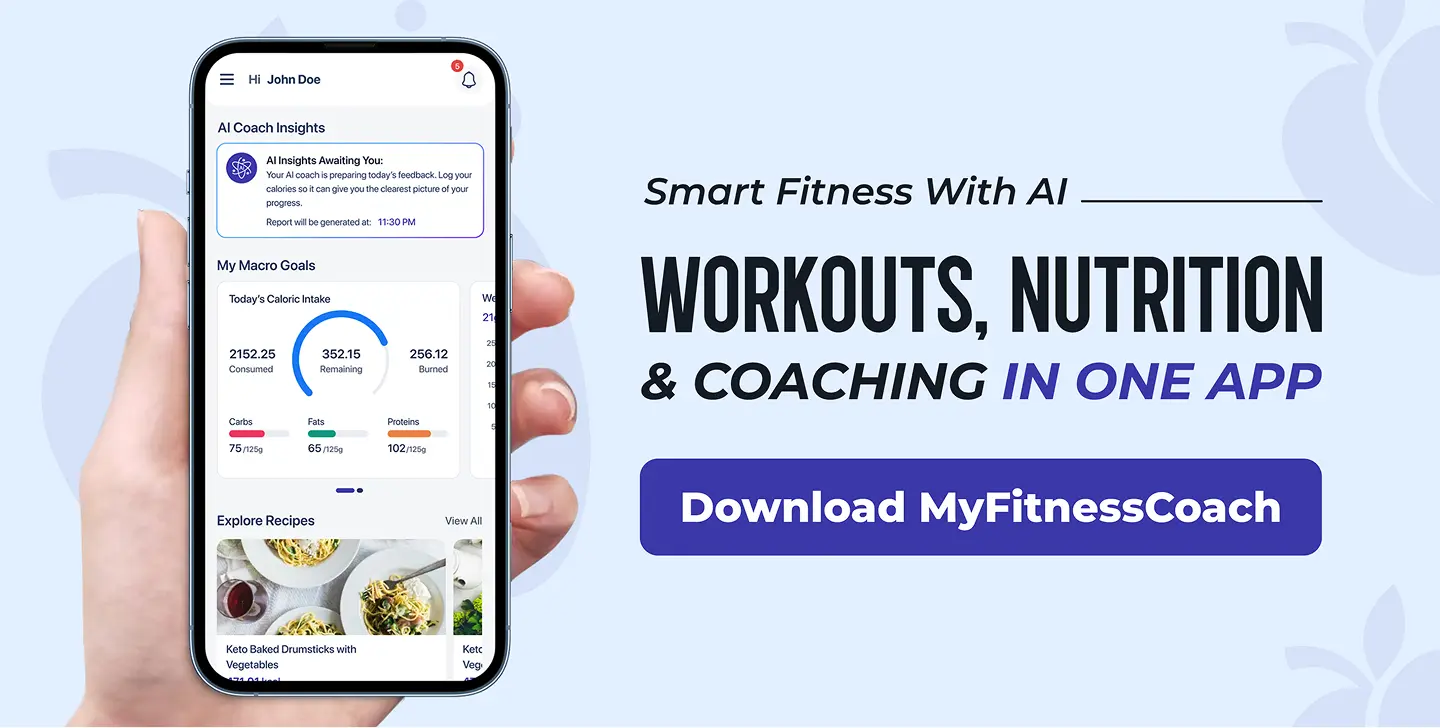Which is More Effective for Fat Loss: Cardio or Strength Training?

MyFitnessCoach
November 27, 2024
When it comes to achieving fat loss, there’s an ongoing debate about whether cardio or strength training is more effective. Both types of exercise have unique benefits, but the choice often depends on individual goals, body type, and lifestyle. This article will explore the science behind cardio and strength training for fat loss and help guide you to the best approach to meet your fitness goals.
Pros of Cardio for Fat Loss:
- Burns Calories Quickly: Cardio is one of the fastest ways to burn calories in a single session.
- Boosts Cardiovascular Health: Cardio strengthens your heart and lungs, enhancing overall endurance and stamina.
- Supports Mood and Energy: Cardio releases endorphins, which can improve mood and reduce stress.
However, cardio can have downsides, especially when done excessively. Long cardio sessions can lead to muscle loss, which may reduce metabolism over time and make maintaining weight loss more challenging. Cardio is great for burning calories, but when combined with strength training, it’s easier to maintain lean muscle mass.
The Role of Strength Training in Fat Loss
Strength training, also called resistance training, involves exercises that build and maintain muscle mass. Strength training exercises include lifting weights, using resistance bands, and performing bodyweight exercises like push-ups and squats. Unlike cardio, which primarily burns calories during the workout, strength training promotes a phenomenon known as the “afterburn effect” or excess post-exercise oxygen consumption (EPOC). This effect leads to calorie burning that continues even after your workout has ended.
Strength training is essential for muscle growth and can increase the body's resting metabolic rate. Muscle is metabolically active, meaning it burns calories even when you’re not actively exercising. Building muscle can also improve body composition, making you appear leaner and more toned even if the number on the scale doesn’t drop significantly.
Pros of Strength Training for Fat Loss:
- Builds Lean Muscle: Muscle burns more calories than fat, so building muscle helps maintain a higher metabolic rate.
- Supports Long-Term Fat Loss: With increased muscle mass, your body’s resting metabolic rate increases, supporting sustained fat loss.
- Prevents Muscle Loss: Strength training helps retain lean muscle while losing fat, which is crucial for long-term success.
One common myth is that strength training will make you bulk up, but that’s not the case for most people. Building muscle takes time and effort, and the slight increase in muscle mass typically results in a leaner, toned appearance rather than bulkiness.
Cardio vs. Strength Training: Which Burns More Calories?
In the short term, cardio tends to burn more calories per session than strength training. However, strength training’s afterburn effect and its impact on metabolism can make it equally, if not more, effective over the long term. Cardio burns more calories during the workout, while strength training increases calorie burn post-exercise and boosts your resting metabolic rate.
High-intensity cardio, especially HIIT, is an efficient calorie burner that can also stimulate muscle growth to a small degree. But strength training remains the primary way to build and maintain muscle, which is vital for long-term fat loss. Studies show that combining both cardio and strength training can provide the most comprehensive results for both fat loss and fitness.
Creating a Balanced Fat-Loss Workout Plan
For most people, the best approach to fat loss is combining both cardio and strength training. Here’s why a balanced plan works best:
- Increased Calorie Burn: Cardio helps burn calories quickly, while strength training sustains calorie burn and increases metabolism over time.
- Improved Body Composition: Cardio can help reduce fat, and strength training ensures you retain lean muscle, leading to a more toned and defined physique.
- Varied Workouts Prevent Plateaus: When you mix cardio and strength, your body is continually challenged, preventing fitness plateaus and keeping workouts engaging.
A sample weekly plan could involve three days of strength training and two to three days of cardio. Combining HIIT or moderate-intensity cardio with resistance exercises ensures you benefit from both fat loss and muscle maintenance.
How Diet Complements Cardio and Strength Training for Fat Loss
Exercise is only part of the equation for fat loss. Nutrition plays a crucial role in reaching your goals effectively. Eating a balanced diet rich in lean protein, whole grains, fruits, and vegetables will support your workouts and recovery. Protein is particularly important when strength training, as it helps build and repair muscles.
It’s also essential to stay within a moderate calorie deficit (eating slightly fewer calories than you burn) to encourage fat loss. Both cardio and strength training will help create this deficit, but ensuring you get enough nutrients to fuel your workouts is crucial to avoid losing muscle mass. Hydration, too, is critical, as it helps with muscle recovery, energy, and overall performance.
The Verdict: Cardio, Strength Training, or Both?
So, which is more effective for fat loss—cardio or strength training? The answer depends on your goals and preferences. Cardio is excellent for burning calories quickly, improving heart health, and supporting endurance. Strength training, however, is essential for long-term fat loss, as it builds muscle and increases metabolism.
Combining both approaches can provide a well-rounded fitness routine that supports not only fat loss but also overall health, strength, and endurance. Whether you prioritise cardio, strength training, or a mix of both, consistency is key. The most effective plan is the one you can stick to regularly.
How MyFitnessCoach Can Help You Achieve Your Fat Loss Goals
Finding the right balance of cardio and strength training for fat loss can be challenging, especially if you’re unsure where to start. That’s where MyFitnessCoach can make a difference. Our app provides personalised workout plans that combine cardio and strength exercises tailored to your fitness goals, lifestyle, and experience level. With MyFitnessCoach, you can track your workouts, monitor your progress, and access a library of exercises designed for effective fat loss.

Our app offers guided cardio sessions, strength training tutorials, and even high-intensity interval training (HIIT) routines to keep your workouts efficient and engaging. Whether you’re looking to shed fat, build muscle, or simply improve overall fitness, MyFitnessCoach adapts to your needs, making your fitness journey more straightforward and enjoyable. Download MyFitnessCoach today to unlock a balanced approach to fat loss that’s sustainable and results-driven.
Similar Articles
Stay informed with these similar articles.

MyFitnessCoach
October 18, 2023
What Does Body Goals Mean? A Path to a Healthy Lifestyle
In the world we live in now, lots of people talk about "body goals," which means having a body that's seen as perfect. On social media, in magazines, and on TV, we see lots of pictures of people with what seems like perfect bodies, which makes us feel like we have to look like them. But the real meaning of "body goals" is more than just looking good. It's about taking care of your whole self, not just how you look. In this article, we will discuss what does body goals actually mean and how you can achieve your body goals. Let’s get started:
.webp&w=3840&q=75)
MyFitnessCoach
September 5, 2023
How Much Protein in an Egg | The Nutritional Power
Eggs have long been a breakfast favorite for many, and for good reason. They're not only delicious but also packed with essential nutrients, making them a versatile and nutritious addition to your diet. One of the most common questions about eggs is, "How much protein is in an egg?" In this comprehensive guide, we'll delve into the world of eggs and explore their protein content, nutritional benefits, and how they can contribute to a balanced diet.

MyFitnessCoach
May 18, 2023
Fitness Guide: How Do I Start A Weight Loss Journey
Ready to start on a life-changing weight-loss journey? Congratulations for taking the first step towards being a better and happier version of yourself! Starting off a weight-loss journey may be both satisfying and stressful. With so much information available, having a well-defined plan and trusted assistance in achieving your goals is important. This article will help you start your weight-loss journey and achieve the results you desire.
